This post is Part I in my blog post series on my road trip through the Peloponnese, a peninsula in southern Greece.
I’ve been dreaming of a trip like the one I’m about to tell you about for over a decade. In college, I read the great works of the Socratics as well as the Cynics, Sceptics, Epicureans and Stoics. I ended up majoring in Philosophy, my final exam being in Metaphysics. However, I always leaned to the Ancient Greeks for unbelievable insight and thought. My favourite philosopher to study was Aristotle, a polymath in his own right.

 Beyond philosophy, I also learned about the history of the Ancient Greeks as well. We’re really lucky to have some written histories from Herodotus and Thucydides from the fifth century BC. Herodotus is known for having written the Histories, a detailed account of the Greco-Persian Wars. He was the first writer to perform “systematic investigations” of historical events. He is referred to by the ancient Roman orator Cicero as “The Father of History”. However, history at this time was often connected with mythology and so Herodotus’ contemporary, Thucydides, accused him of making up stories for entertainment. However, Herodotus explained that he reported what he could see and was told (even if that meant some myths as well). Despite suspicions, a sizable portion of the Histories has actually been confirmed by modern historians and archaeologists.
Beyond philosophy, I also learned about the history of the Ancient Greeks as well. We’re really lucky to have some written histories from Herodotus and Thucydides from the fifth century BC. Herodotus is known for having written the Histories, a detailed account of the Greco-Persian Wars. He was the first writer to perform “systematic investigations” of historical events. He is referred to by the ancient Roman orator Cicero as “The Father of History”. However, history at this time was often connected with mythology and so Herodotus’ contemporary, Thucydides, accused him of making up stories for entertainment. However, Herodotus explained that he reported what he could see and was told (even if that meant some myths as well). Despite suspicions, a sizable portion of the Histories has actually been confirmed by modern historians and archaeologists.
Thucydides on the other hand wrote the History of the Peloponnesian War, which recounts the fifth-century BC war between Sparta and Athens until the year 411 BC. Thucydides has been dubbed the father of “scientific history” as his account is deemed to be quite credible, as well as relatively unbiased. In combination with the epics by Homer, these histories give us incredible insight into Ancient Greece, in particular the Peloponnese.
The Peloponnese
So, where exactly is the Peloponnese and what is it? The Peloponnese is a peninsula in southern Greece that has been inhabited since prehistoric times. It’s about the size of the country of Israel or the US state of New Jersey. Europe’s first major civilization, the Mycenaean civilization, dominated the Peloponnese in the Bronze Age. As I mentioned, much of what we know about the Peloponnese is via the histories referenced above and also literary works like the poems of Homer. The Iliad is set in the Peloponnese, the majority of which is set during the mythological Trojan War.
 It’s important at this stage to clarify that much of what we’ve been told about Ancient Greece is based on mythology and no actual concrete evidence. However, this is the beauty of such an ancient era. It’s cloaked in myths and legends, heroes and kings, it’s an area that has captivated people for centuries. The stories and histories may not be necessarily real, however, the impact was and is very real indeed.
It’s important at this stage to clarify that much of what we’ve been told about Ancient Greece is based on mythology and no actual concrete evidence. However, this is the beauty of such an ancient era. It’s cloaked in myths and legends, heroes and kings, it’s an area that has captivated people for centuries. The stories and histories may not be necessarily real, however, the impact was and is very real indeed.
As for the trip itself, we stayed in Athens for a few days to explore some sights as well as visit the amazing museums. On a Monday morning, we headed to the airport to pick up our rental car, so our road trip around the Peloponnese began.
Ancient Corinth, Prosperous
He sent me off to Troy . . .
and I hear his urgings ringing in my ears:
‘Always be the best, my boy, the bravest,
and hold your head up high above the others.
Never disgrace the generation of your fathers.
They were the bravest champions born in Corinth,
in Lycia far and wide.’Lines 247-250, Book VI, The Iliad by Homer
Our first stop of the day was the ancient city of Corinth. According to mythology, the city was founded by Corinthos, a descendant of the god Helios (the Sun), while other myths suggest that it was founded by Ephyra, a daughter of the Titan Oceanus, reflecting the ancient name of the city (Ephyra).
 The quote above is from Homer’s The Iliad when the warrior Glaucus recounts to Diomedes the advice he received from his father as he left for the Trojan War. Glaucus was a captain in the Lycian army and they were allies of Troy in the Trojan War. Despite Corinth not being in Lycia, the quote above indicates that Glaucus’ ancestors were born in Corinth.
The quote above is from Homer’s The Iliad when the warrior Glaucus recounts to Diomedes the advice he received from his father as he left for the Trojan War. Glaucus was a captain in the Lycian army and they were allies of Troy in the Trojan War. Despite Corinth not being in Lycia, the quote above indicates that Glaucus’ ancestors were born in Corinth.
Glaucus’ great-great-grandfather was Sisyphus, the founder of a race of ancient kings at Corinth (then called Ephyra). He was so cunning he cheated death not once, but twice. When he eventually reached the underworld, Hades punished him with an unending task. He forever pushed a rock up a hill, only to have it roll to the bottom again just as he was about to reach the top; a fitting life metaphor for depressed existentialists everywhere. Sisyphus’ grandson was the famed hero Bellerophon. He was “the greatest hero and slayer of monsters, alongside Cadmus and Perseus, before the days of Heracles” and his most remarkable feat was killing the Chimera, a monster that Homer depicted with a lion’s head, a goat’s body, and a serpent’s tail: “her breath came out in terrible blasts of burning flame.” Bellerphon’s grandson is the Glaucus mentioned and quoted above.
 Mythology aside, the site of ancient Corinth was first inhabited in the Neolithic period (6500-3250 B.C.). The remains of Ancient Corinth sit at the base of the Acrocorinthus, a massive rock formation that rises 300 feet above sea level. You can see it clearly from the site. The area had fertile soil, but it was Corinth’s strategic location at the intersection of land routes and waterways that made it so that it had power and prosperity early on.
Mythology aside, the site of ancient Corinth was first inhabited in the Neolithic period (6500-3250 B.C.). The remains of Ancient Corinth sit at the base of the Acrocorinthus, a massive rock formation that rises 300 feet above sea level. You can see it clearly from the site. The area had fertile soil, but it was Corinth’s strategic location at the intersection of land routes and waterways that made it so that it had power and prosperity early on.
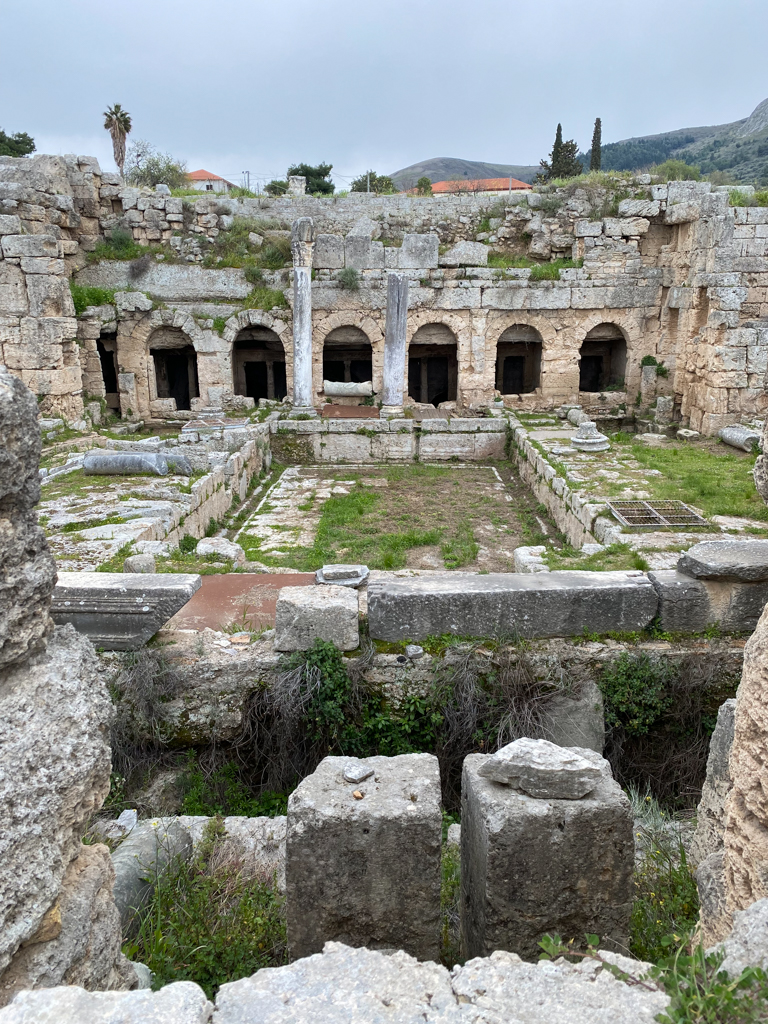
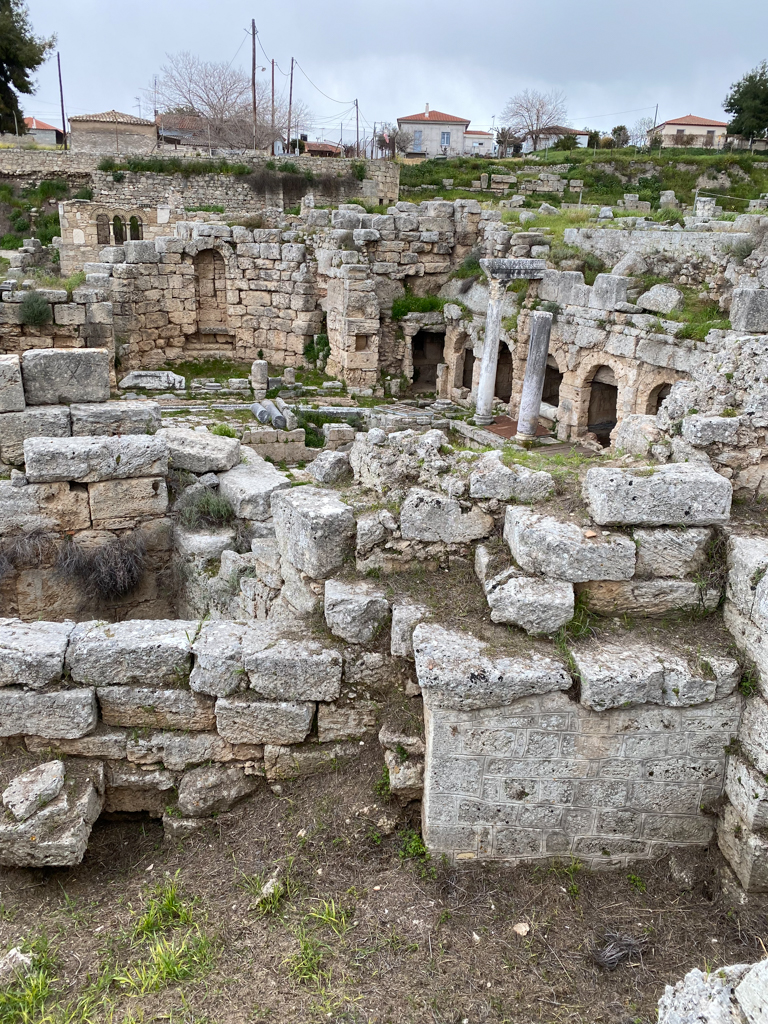
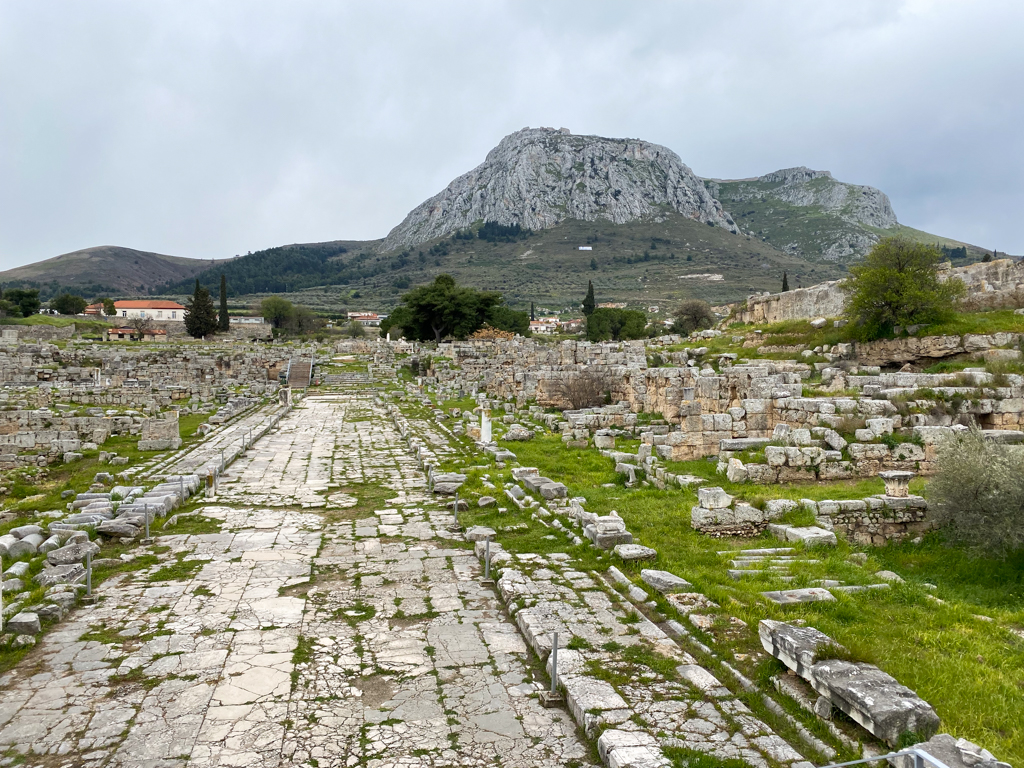
In ancient times, Corinth was a powerful and major city-state. The strength of Corinth was reflected in its exquisite buildings like the Temple of Apollo (560 BC) as well as the rise of the Isthmian Games, held at the Corinthian sanctuary of Poseidon and Amphitrite at Isthmus, as well as the Panhellenic Games (584 BC) which further increased the fame and influence of the city.
 The remains of other temples, villas, a theatre, shops, public baths, pottery factories, a gymnasium, a large triumphal arch, and other buildings dot the site, which since 1896 has been extensively excavated. These discoveries show how prosperous and lively Corinth once was.
The remains of other temples, villas, a theatre, shops, public baths, pottery factories, a gymnasium, a large triumphal arch, and other buildings dot the site, which since 1896 has been extensively excavated. These discoveries show how prosperous and lively Corinth once was.
However, from the end of the 6th century BC, the rise of Athens and its dominance in the production of ceramic vases and in Mediterranean trade gradually eclipsed the influence of the Corinthians, particularly after the Persian Wars (490-479 BC) where, despite their powerful participation, the Corinthians were forced to yield to the primacy of the Athenians.
Acrocorinth
The Acrocorinth loomed over us as we explored the Ancient Corinth site. We then drove up the mountains and came across the ruins of a castle nestled on the steep rock of Acrocorinth and rising above the southwest of Ancient Corinth.
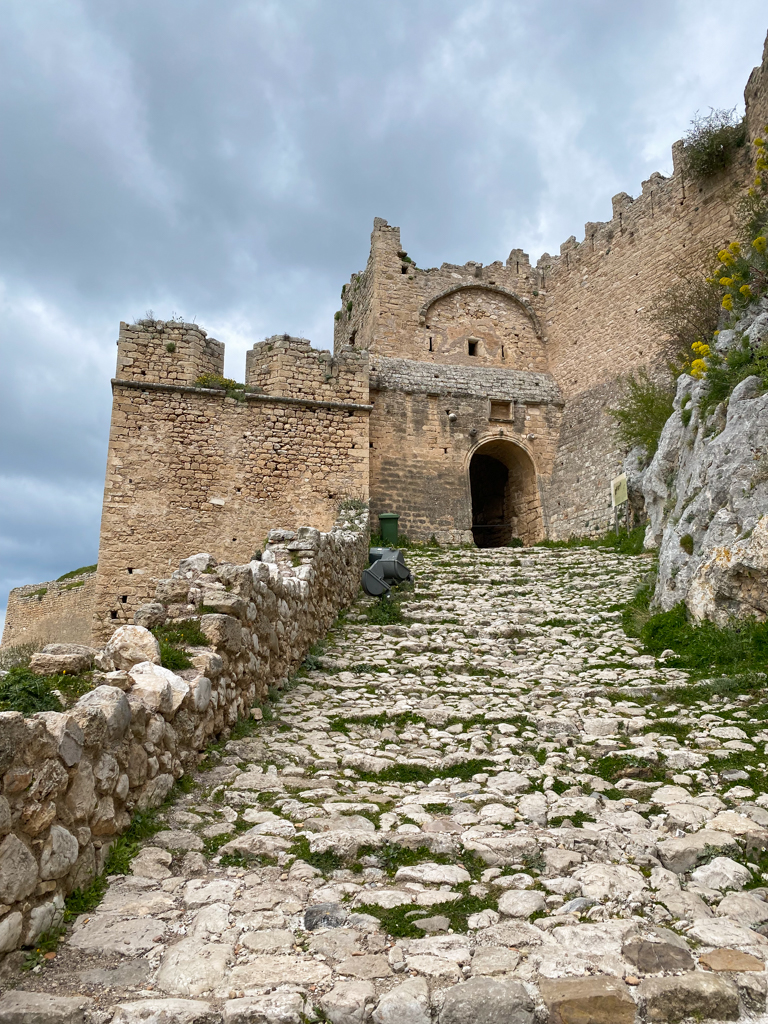

Acrocorinth was the fortified acropolis for ancient and medieval Corinth. Parts of the classical period wall are also visible, as well as constructions and additions of new fortifications from the Byzantine period, extended fortification works of the Frankish and Venetian rule, as well as interventions which took place mainly in the interior during the Ottoman rule. It has been fortified by many groups over the centuries but today most of what can be seen were built by the Venetians and the Franks.

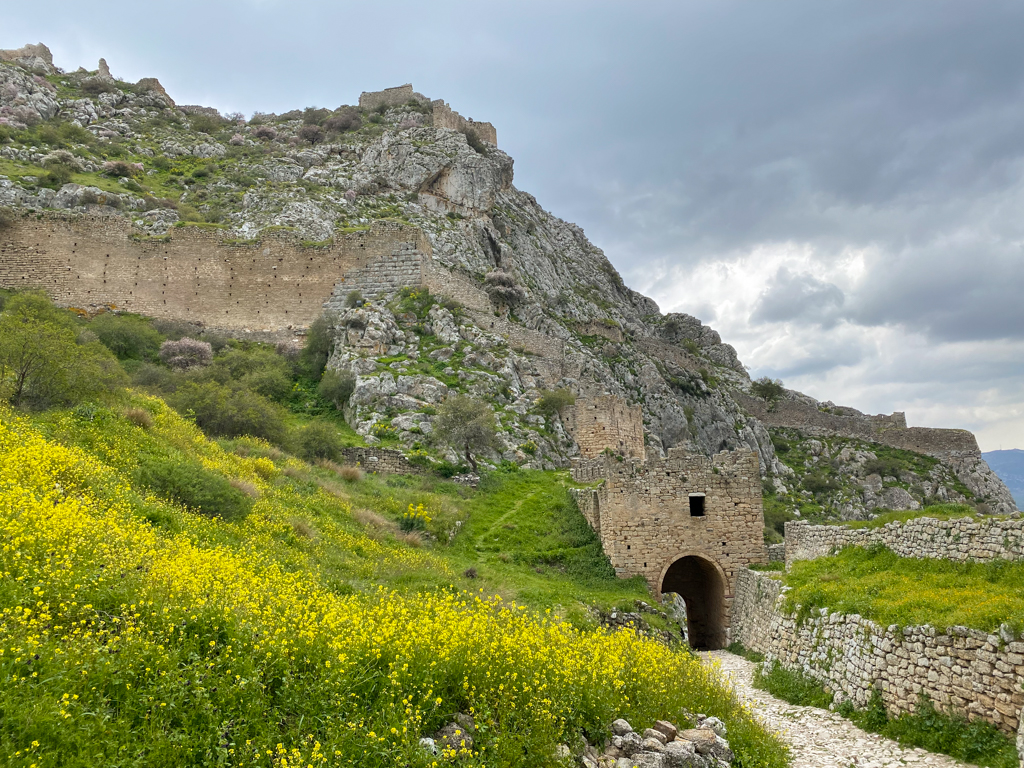 The site was particularly beautiful and enchanting because of all the wildflowers. Throughout this blog post series, you’ll see lots of photos of ruins covered in wildflowers, which is one of the main reasons I recommend visitors to come to Greece in the Spring!
The site was particularly beautiful and enchanting because of all the wildflowers. Throughout this blog post series, you’ll see lots of photos of ruins covered in wildflowers, which is one of the main reasons I recommend visitors to come to Greece in the Spring!
Ancient Nemea, Full of Vines
We drove back down the mountain to the site of Ancient Nemea. Nemea was not an official city, but rather a sanctuary of Zeus. Three original columns of the imposing 4th-century-BC Doric Temple of Zeus survive, and the on-site museum displays rich finds from the area.
 Athletics was always very important in ancient Greek culture, evidenced by the existence of athletic festivals. We’ve all heard of the Olympic Games, which traditionally date back to 776 BC. Funeral games, being athletic competitions held in honour of the recently deceased, took place for the next 200 years. However, during the beginning of the sixth century BC, we start seeing more and more athletic festivals beyond the funerary ones. The musical festival at Delphi is reorganised as the four-yearly Pythian games (586 or 582) and the games at the Isthmus of Corinth in honour of Poseidon (582). Games were also held at Nemea in honour of Zeus in 573, and these were hosted biennially. You can still see the ruins of the Ancient Stadium.
Athletics was always very important in ancient Greek culture, evidenced by the existence of athletic festivals. We’ve all heard of the Olympic Games, which traditionally date back to 776 BC. Funeral games, being athletic competitions held in honour of the recently deceased, took place for the next 200 years. However, during the beginning of the sixth century BC, we start seeing more and more athletic festivals beyond the funerary ones. The musical festival at Delphi is reorganised as the four-yearly Pythian games (586 or 582) and the games at the Isthmus of Corinth in honour of Poseidon (582). Games were also held at Nemea in honour of Zeus in 573, and these were hosted biennially. You can still see the ruins of the Ancient Stadium.
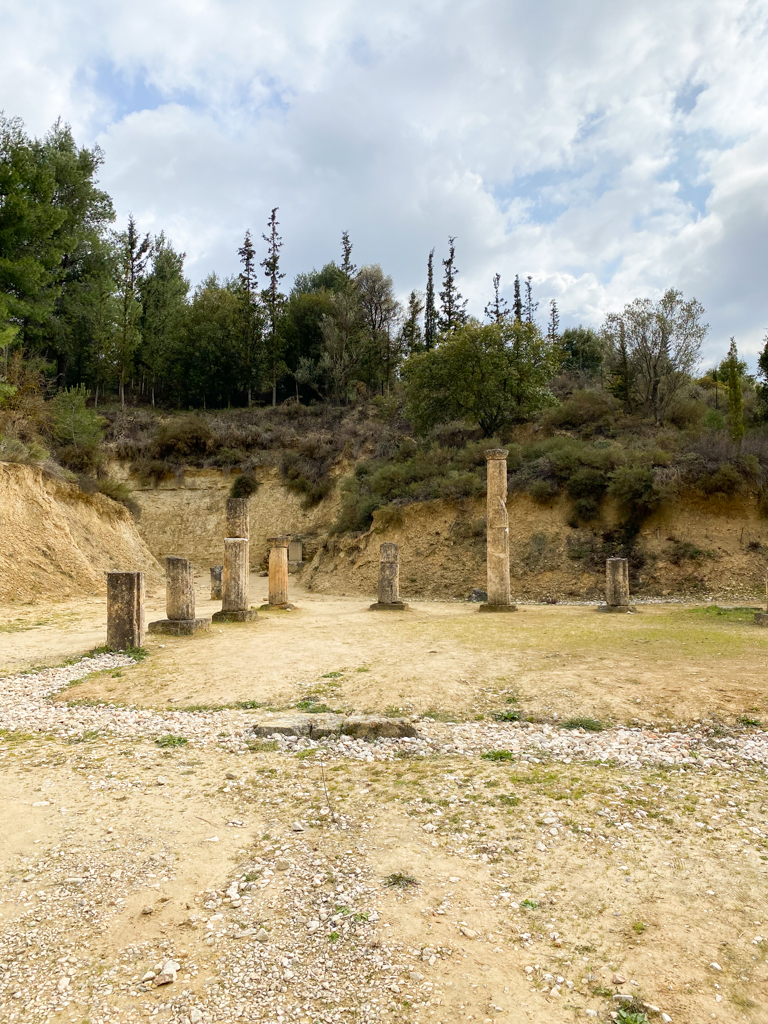
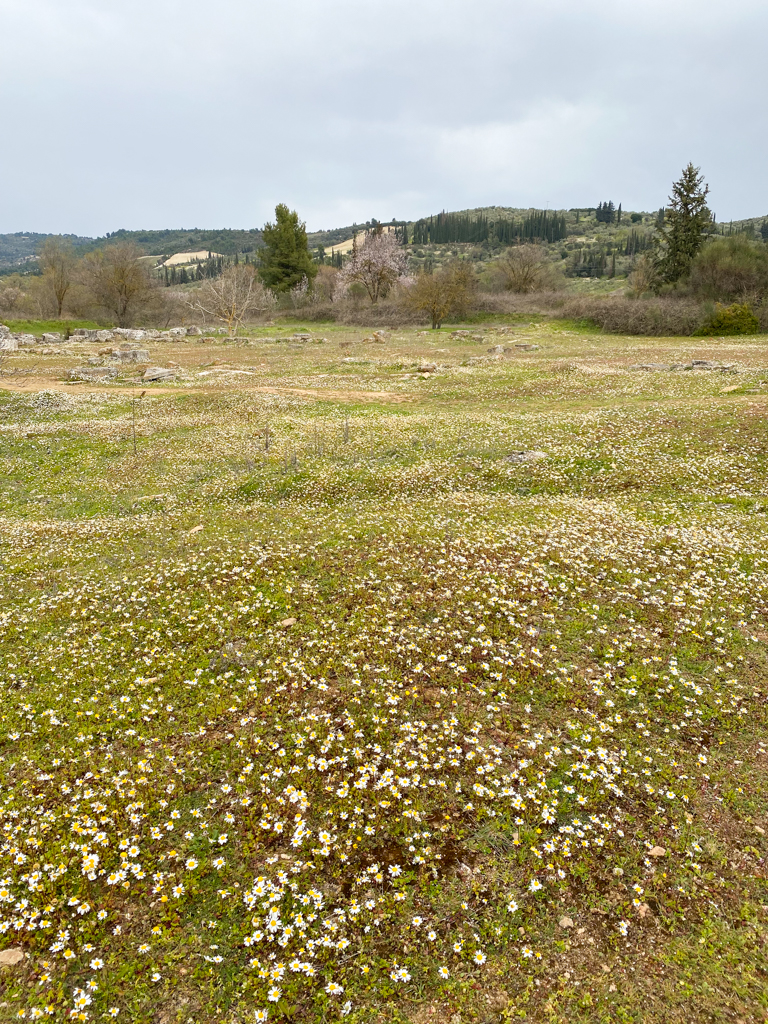
According to mythology, this area is also attributed to Heracles’ first labour, the slaying of the lion that had been sent by Hera to destroy Nemea. After Heracles killed the lion by lifting it off the ground and choking it to death, the lion became the constellation Leo.
Wine Pit-stop
Homer called this area Ampeloessa, meaning “full of vines.” Indeed, winemaking here goes back thousands of years. In fact, wine growing in this area dates back to at least the 5th Century BC. The Ancient Greek wine of Fliasion was made in Nemea and was known as the “Blood of Heracles”, a moniker that is still today equated with Nemean wines.
Nemea is arguably Greece’s most important red-wine region, even today. The Agioritiko is the primary grape grown here in Nemea which is red. There are numerous wineries in the region, but we decided to try one called Palivou Estate. George Palivos is third generation winemaker and grows Agioritiko.
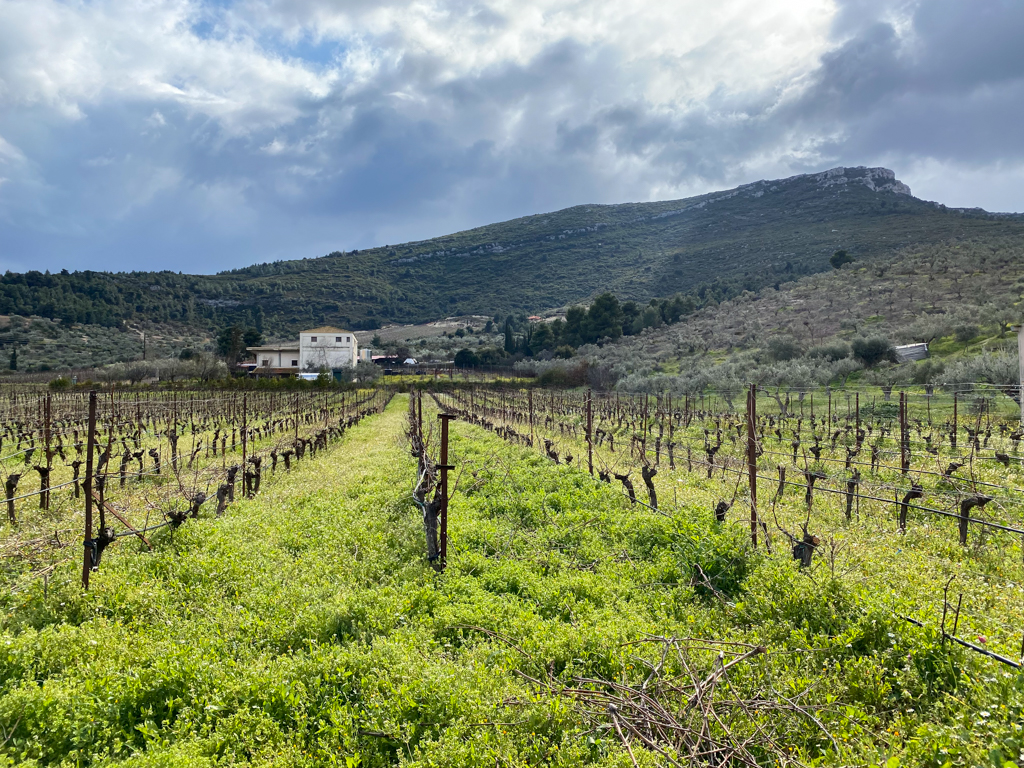
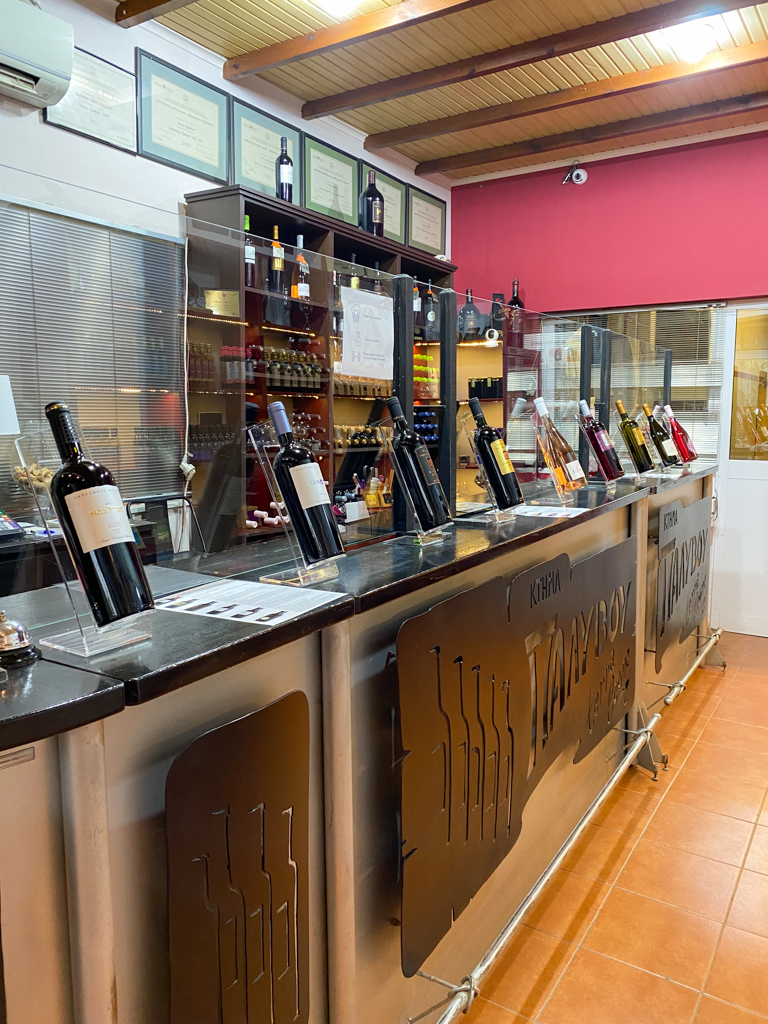
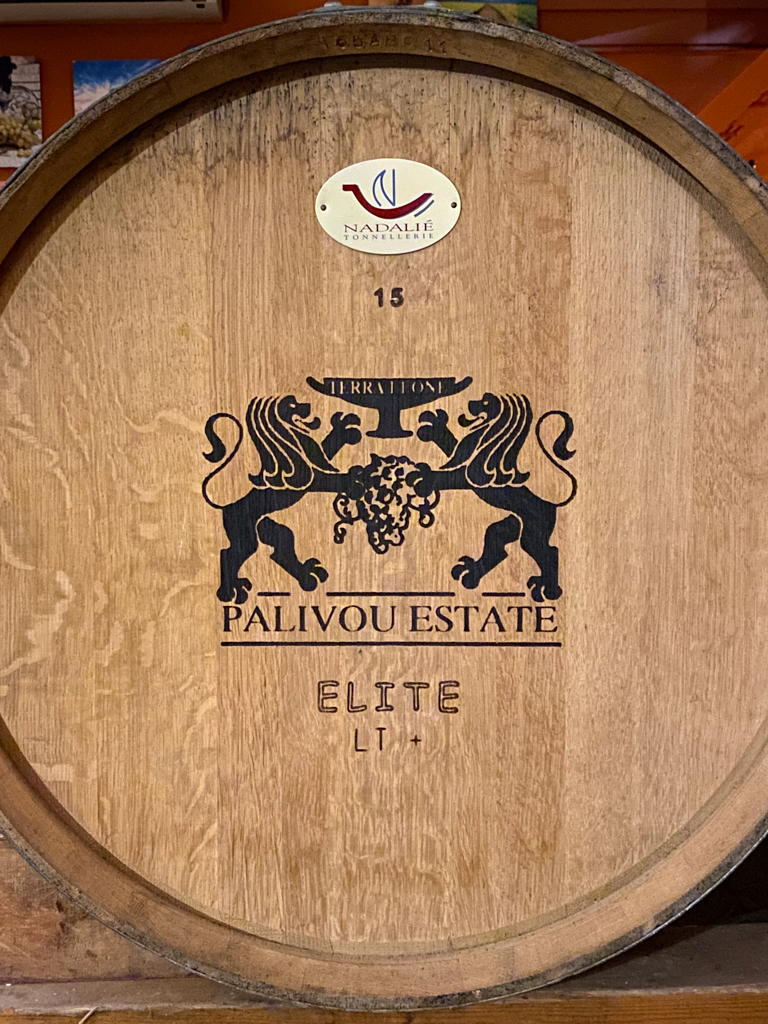
It was a really cold day out in the vineyards, but our tour guide was extremely nice anyway and she explained the history and mythology behind the region and how winemaking has decreased and increased over the centuries.
Our Final Stop, Nafplio
Finally, it was time to drive to our final stop and resting place for the night, Nafplio. It’s a coastal city and is arguably one of the most beautiful ones in the Peloponnese. We drove to the harbour to park and then walked into the central area to find our accommodation, the Xenon Inn. It’s a wonderfully charming hotel, situated in a 19th-century building and overlooking the historic central square of the city.
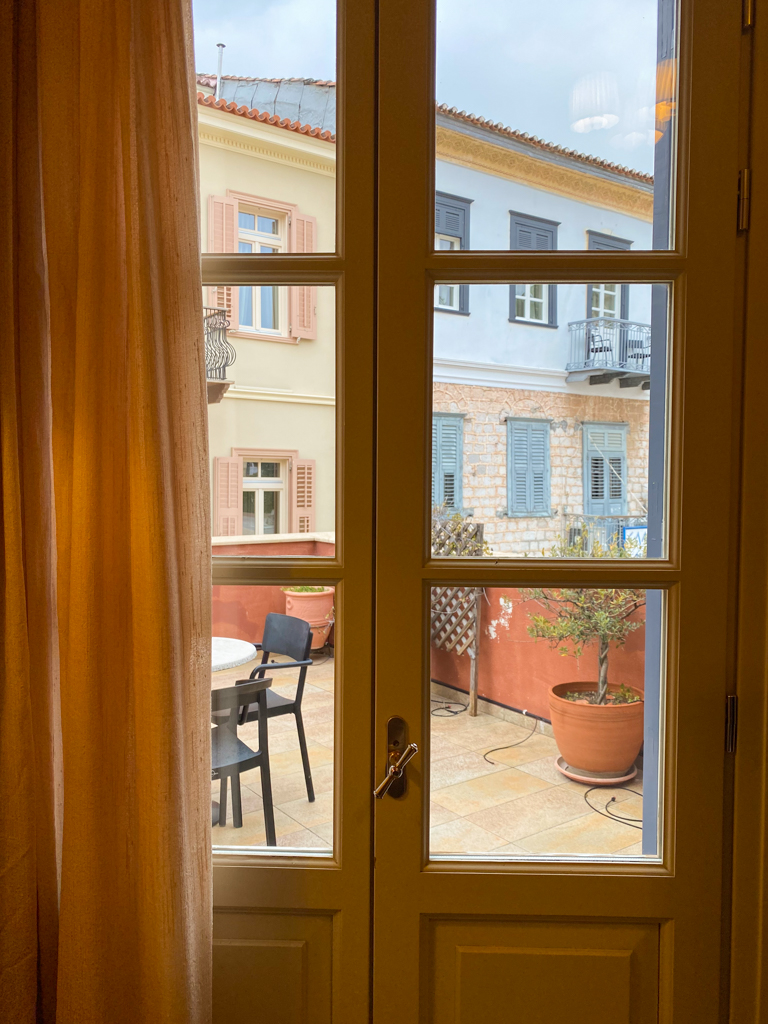
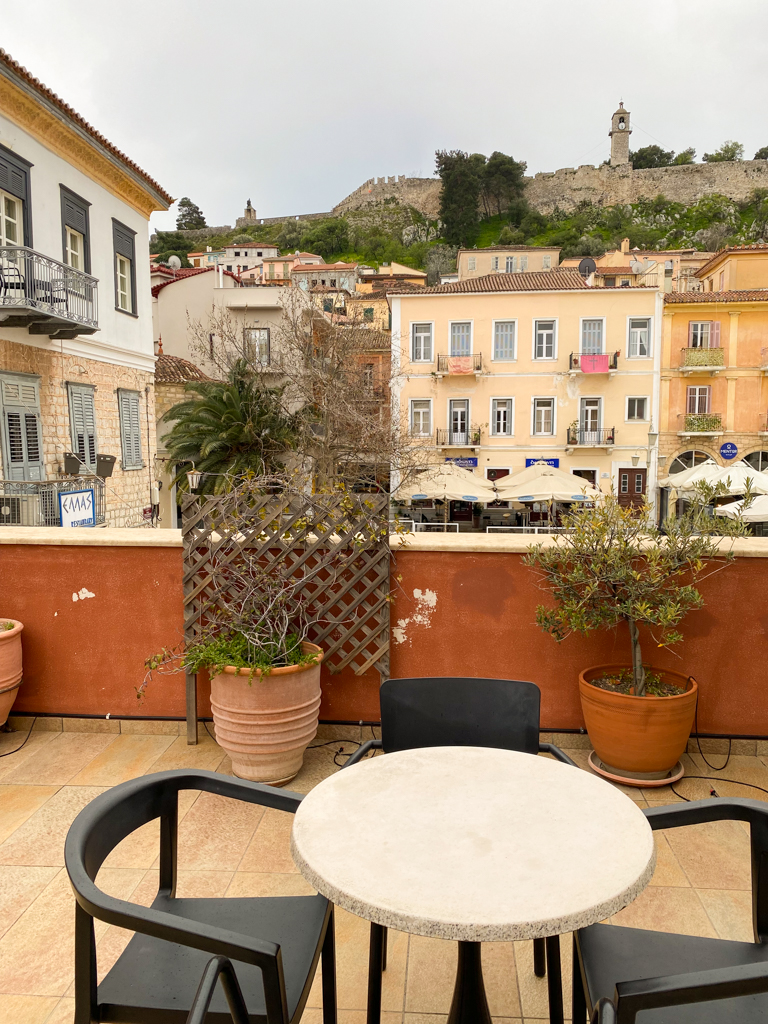
We were quite tired, but after a bit of rest, we went back out for dinner. We went to Pidalio Tavern. One thing you quickly learn is to always order a salad. We rotated the type of salad each, day and definitely always tried to pick the house salad of each place we ate. At Pidalio, we had the Pidalio salad, consisting of lola rosa lettuce, iceberg lettuce, radicchio, rocket, baby spinach, green apple, vinaigrette, a Greek salad tip and breadsticks. We also ordered Tsiros (smoked mackerel) and Goat cheese “donuts” (more like croquettes). For our mains, we got Orzo with prawns and the Breaded octopus with eggplant/aubergine puree and caramelised onion. Everything was very fresh and delicious.
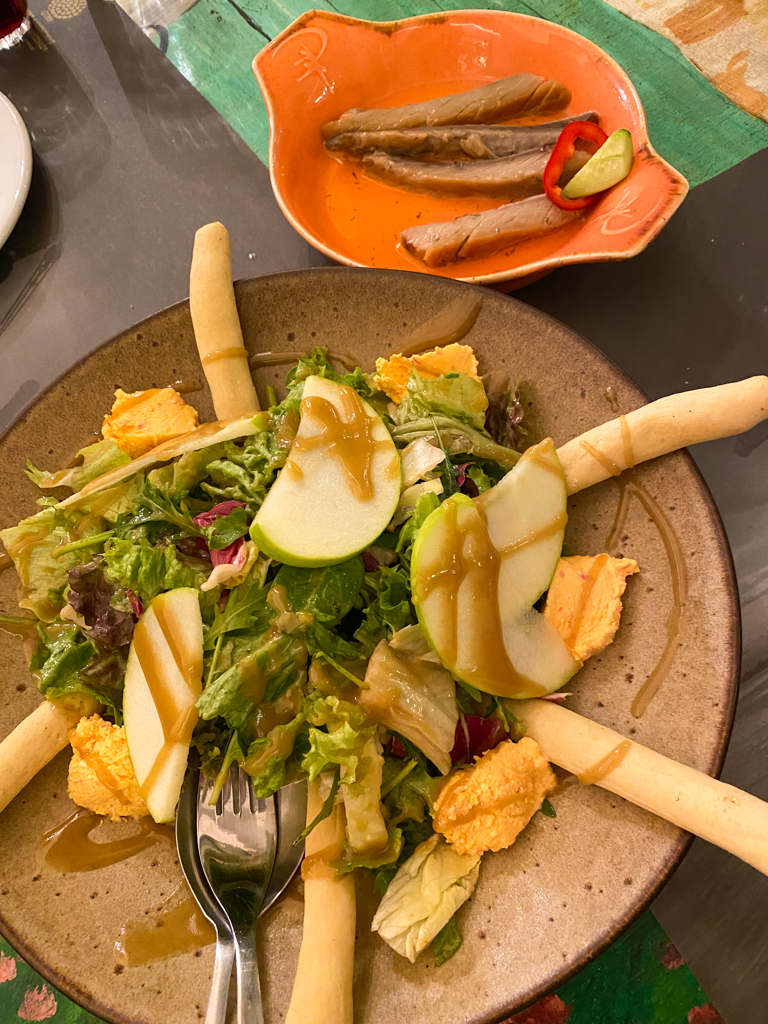
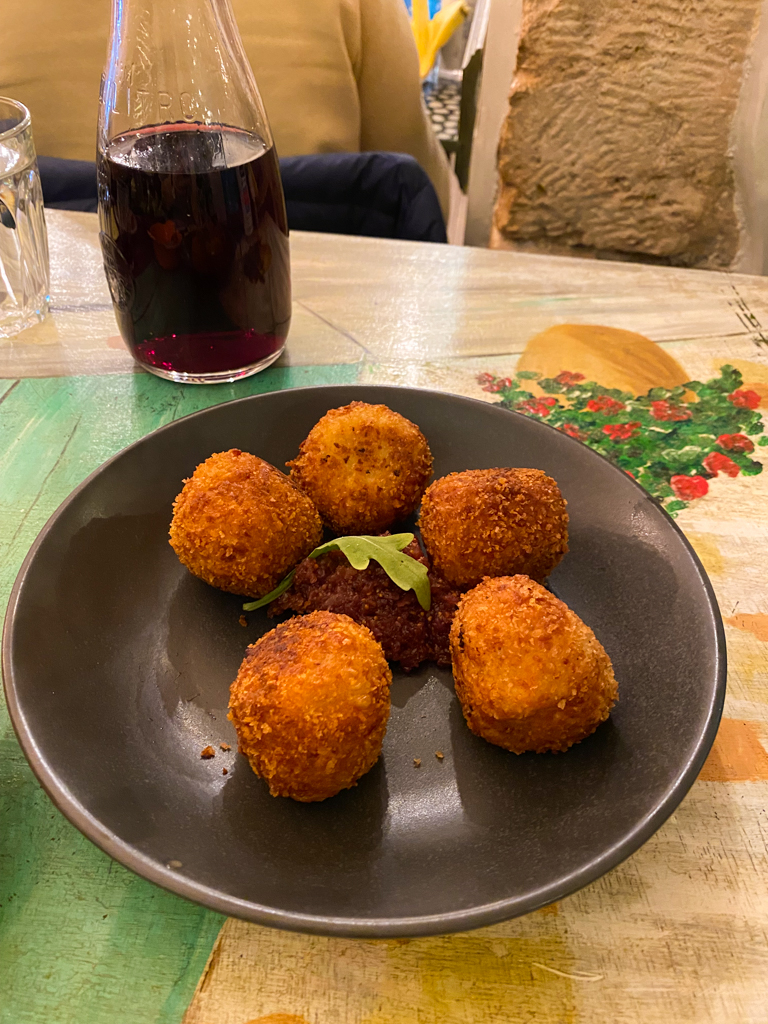

And so ended our first beautiful day in the Peloponnese. I really enjoyed the ruins and small, intimate museums. And of course, being created by beautiful Nafplio was too shabby either.
Stay tuned for Part II, when we get into more ruins!


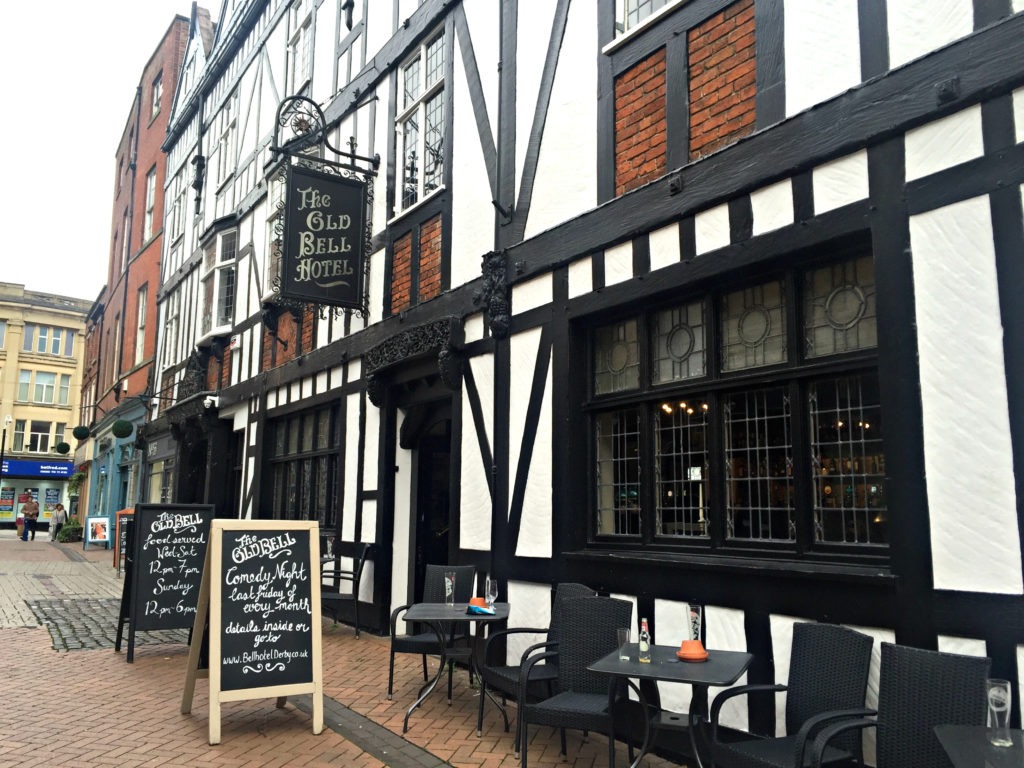
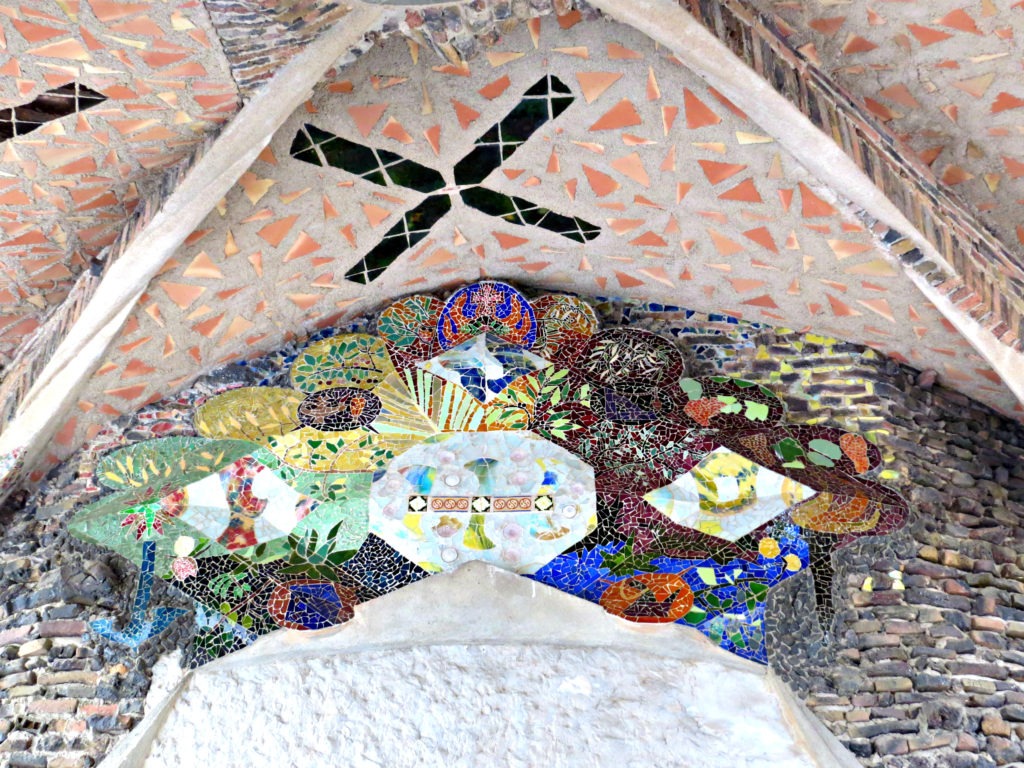
No Comments